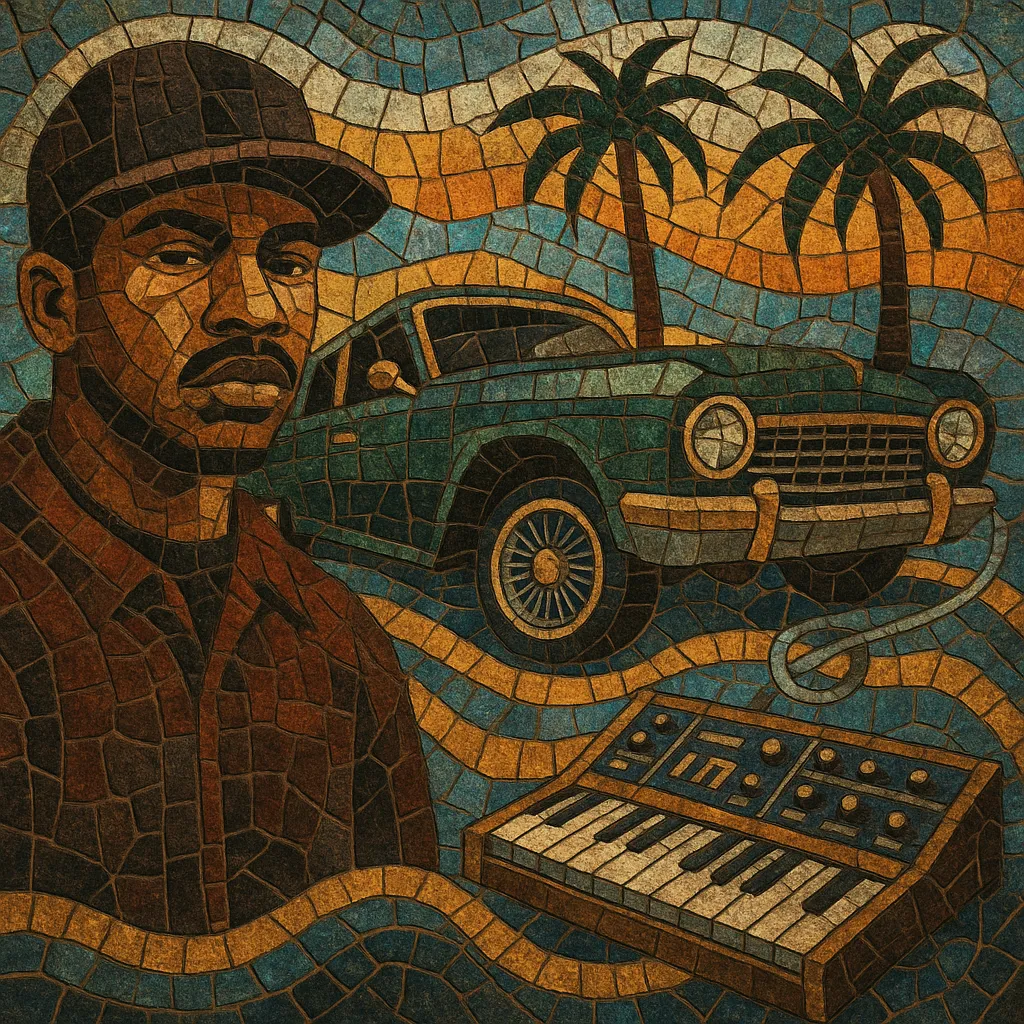G-funk (short for "gangsta-funk") is a West Coast hip hop style that blends gangsta rap lyricism with the smooth, melodic grooves of 1970s funk, especially the Parliament-Funkadelic (P-Funk) tradition.
It is characterized by slow-to-mid tempos, warm and heavy basslines, lush chords, prominent high-pitched synth leads (often Moog-style whistles), talkbox/vocoder hooks, and relaxed, behind-the-beat drum programming. The sound feels laid-back and summery even when the subject matter is gritty, pairing street narratives with feel-good, bass-driven bounce.
G-funk defined the early-to-mid 1990s Los Angeles sound—popularized by Dr. Dre, Snoop Dogg, Warren G, and Nate Dogg—and became one of the most commercially successful and widely recognizable flavors of hip hop.
G-funk crystallized in the Los Angeles area at the turn of the 1990s as West Coast hip hop and gangsta rap absorbed deep influences from 1970s funk and soul. Early blueprints came from acts like Above the Law (with Cold 187um) who experimented with slower tempos, layered synths, and P‑Funk textures. Their approach set the stage for a more melodic, groove-heavy direction in street-oriented rap.
Dr. Dre’s 1992 album “The Chronic” transformed the underground formula into a dominant mainstream sound: rubbery bass, glossy Rhodes chords, high sine‑lead synths, talkbox hooks, and a relaxed, swinging drum feel. Snoop Doggy Dogg’s “Doggystyle” (1993) cemented the style’s appeal, while Warren G and Nate Dogg’s “Regulate” (1994) brought G‑funk’s smoothness to radio ubiquity. Death Row Records became the powerhouse imprint associated with the genre, shaping West Coast hip hop’s global image.
Through the mid-1990s, G-funk aesthetics permeated albums by DJ Quik, Tha Dogg Pound (Daz Dillinger, Kurupt), and even influenced artists beyond Los Angeles. Its sonic DNA—melodic hooks, luxuriant synths, and laid-back bounce—bled into R&B and pop-rap, helping normalize sung choruses and smoother textures in mainstream hip hop.
While rap production diversified after the late 1990s, G-funk’s palette continued to echo in West Coast styles and in artists who revived or referenced its feel. Documentaries (such as the 2017 film “G-Funk”) and contemporary albums (e.g., West Coast projects that nod to Dre’s lineage) helped renew interest. Elements of G-funk—melodic bass, talkbox, and P‑Funk-esque chords—remain a living influence in melodic rap and modern R&B-inflected hip hop.


